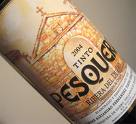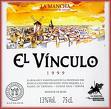The recent passing of Robert Mondavi has given me cause to reflect. My first instinct after hearing the news was to remember Mondavi as one of a kind. Certainly no figure in American wine cast a greater shadow than the man from the Napa Valley.
 Yet I look around the globe, particularly to Italy, where Angelo Gaja and Piero Antinori are a mirror image of Mondavi from across the Atlantic. Both men have been instrumental in the renaissance and broad acceptance of Italian wine. They were bold visionaries – and worldwide ambassadors – at about the same time Mondavi was spreading the gospel of the Napa Valley.
Yet I look around the globe, particularly to Italy, where Angelo Gaja and Piero Antinori are a mirror image of Mondavi from across the Atlantic. Both men have been instrumental in the renaissance and broad acceptance of Italian wine. They were bold visionaries – and worldwide ambassadors – at about the same time Mondavi was spreading the gospel of the Napa Valley.
These men are all cut from the same cloth, national treasures to be admired and lionized for all they have done to lift up their colleagues and neighbors as well as themselves.
So I had this on my mind when the opportunity came to sit down and taste with another such man, winemaker Alejandro Fernandez of Spain’s Tinto Pesquera. Fernandez, like Mondavi, Gaja and Antinori, began to produce wine when his industry was at low ebb.
Spanish wines of the 1970s were mired in the post-World War II tradition of quantity over quality. Grape growers were paid by the ton, and money was scarce. More tonnage, therefore, was widely thought to be the path to prosperity.
The wine industry of Spain at that time was focused on the so-called quality of the Rioja region, and there was something to be said for that. Red wine from Rioja was certainly Spain’s most sought after and appreciated wine commodity, but quality producers were few and far between.
Rioja Crianza, like cheap Chianti, was light and easy – and cheap!
Fernandez, from his vantage point north of Madrid and not far from the hallowed ground of Rioja, had a better idea. His property, then confined to the relatively unknown and unheralded region of Ribera del Duero, was planted to the same indigenous grape variety – Tempranillo – that was the workhorse of Rioja.
Yet there was a difference, immediately apparent and very stark. Tinto Pesquera was bold and rich, with plump, juicy, mouth-watering fruit and velvety tannins. Yet it possessed fresh acidity and a thread of minerality when young that turned into what the French call garrigue – I call it earthiness – as it aged.
I first drank Pesquera in the early 1980s, when the initial vintages were released. It was a revelation at the time that Spain could make such good wine, although I later realized that Pesquera’s neighbor from the Ribera del Duero, Vega Sicilia, had been a partner in crime for many years, but these were wines we seldom had a look at here in the United States.
 When Fernandez came to call, I was in the midst of a busy week of preparation for the annual Wine & Roses charity wine tasting in my home base of San Diego. Time was short and I was concerned about the clock winding down before I had completed all of my tasks.
When Fernandez came to call, I was in the midst of a busy week of preparation for the annual Wine & Roses charity wine tasting in my home base of San Diego. Time was short and I was concerned about the clock winding down before I had completed all of my tasks.
Yet it was Alejandro Fernandez. I had tasted and admired his wines from the very beginning. His Tinto Pesquera is almost automatic for me if I spy it on a wine list. I couldn’t say no, another time. Though I taste wines professionally and sample great vintages nearly every day, there is a bit of the earliest wine geek in me that comes out when I have an opportunity to reach back for some of my fondest wine tasting memories.
My first bottle of Pesquera, for example, tasted in a long-since-forgotten tapas bar in Palm Springs, circa 1984. My last bottle of Pesquera ‘Janus’, the top-of-the line gran reserva Pesquera only produced in special vintages, last year at the famous Madrid restaurant, Veridiana. True wine geeks remember these things, I must confess.
So now I am sitting with Alejandro Fernandez in a Spanish restaurant in San Diego tasting nine or ten of his wines at 10 in the morning and there is this one thing I want to know, because it’s been bugging me for years.
Alejandro’s English is not good and my Spanish is very bad, but we have an interpreter.
I have been drinking Tinto Pesquera from the very first vintages, I say, and I had observed some vintages that seemed to have more obvious evidence of new oak. I had always theorized that the reason was vintage variation. Perhaps some years the fruit is such that the wine shows more oak?
 Seemed like a logical conclusion to me. But Fernandez listened and began to shake his head. Not a yes shake, but a no shake. The reason for that, he explained, was that he was still experimenting with his barrel rotation and had not been able to get a fix on the best percentage of new oak.
Seemed like a logical conclusion to me. But Fernandez listened and began to shake his head. Not a yes shake, but a no shake. The reason for that, he explained, was that he was still experimenting with his barrel rotation and had not been able to get a fix on the best percentage of new oak.
Since 1996, however, the rotation has been set and there is about 15 percent new oak each year. This was pure wine-geek stuff. I found Alejandro’s candor remarkable. Many a winemaker would not admit there had been gaps in the knowledge over the history of a wine.
But this is what great winemakers do. They learn from their mistakes and move on, usually to a higher level.
The 2005 Tinto Pesquera I tasted this day was as intriguing and inviting as the Pesquera I remembered from my first experience with the wine in 1984. The other wines at the table – various vintages of Contado de Haza, Alenza Gran Reserva, Dehesa La Granja and El Vinculo – were of a kind in that they were all made from Tempranillo, but with their own distinct personality.
‘Same grape, same man, but all of the wines are different,’ someone at the table noted. ‘Alejandro allows the grapes to speak.’
Be it the man or the grapes doing the talking, the message is the same. It’s all about quality, all about integrity. In this regard, the iconic wine figures of Spain, Italy and America shared a common bond.
8
